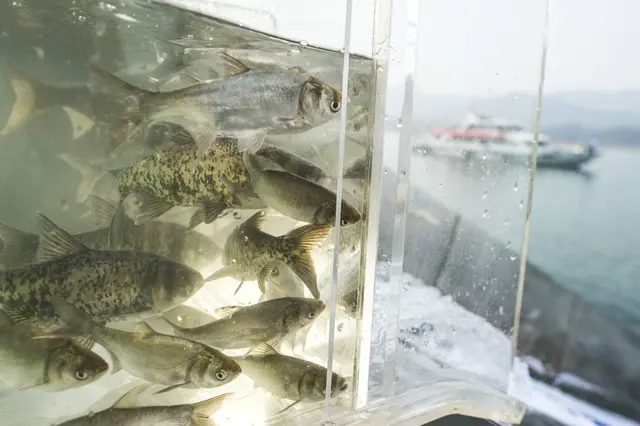The Chinese Ministry of Agriculture has activated an annual fishing ban along the Yangtze River, extending it from the usual three months to four months.
The ban, which lasts until June 30, covers the spawning season for most of the river's aquatic life. It includes the entire river as well as key tributaries and lakes.
The ban also applies to the Huaihe River, which runs almost parallel between the Yangtze River and the Yellow River.
The ban has been extended to better protect fish stocks, said Li Yanliang, director of the ministry's Fishery Inspection and Management Office. "The extension marks a new phase for environmental protection along the river as the central government starts intensive efforts to protect the Yangtze," Li said.
The first ban on the lower reaches of the river was in 2002. In 2003, it was approved by the State Council and extended to the whole river basin.
The fishing restriction has helped restore fish stocks and protected the environment, but it has not prevented the broader environment along the Yangtze from degrading.
Cao Wenxuan, a member of the Chinese Academy of Sciences, said the amount of non-farmed fish caught from the Yangtze stands at 100,000 tons a year, a quarter of the figure in the 1950s. Over-fishing by the more than 280,000 fishermen along the reaches of Yangtze remains a problem, he added.
The Yangtze is a valuable reserve of aquatic bio-diversity, but excessive fishing has put some species including the river dolphin on the brink of extinction.
"There used to be more than 30 billion fry in the 1950s, but now the number is only 100 million," Cao said. He is advocating an across-the-board ban on fishing in the river.
Chinese President Xi Jinping has called for "green development" of the Yangtze River Economic Belt, the network of economic hubs covering 11 provinces and municipalities. Xi said no large-scale development would be allowed along the river "for a rather long period to come."
Last week, China announced a plan to improve the water quality of the Yangtze as part of wider measures to balance economic activity and environmental protection.
In the years leading up to 2020, local authorities will work to ensure that more than 75 percent of the water in the Yangtze economic belt meets at least the Grade III standard, according to the National Development and Reform Commission, the top economic planning agency.
China classifies water quality into six levels, ranging from level I, which is suitable for drinking after minimal treatment, to level VI, which is severely contaminated.
 简体中文
简体中文

